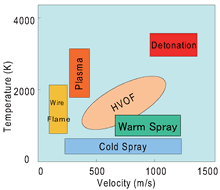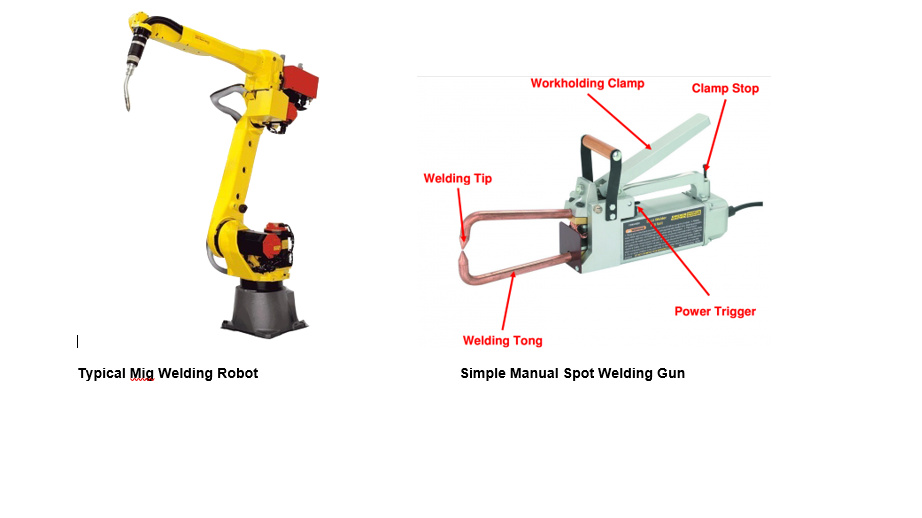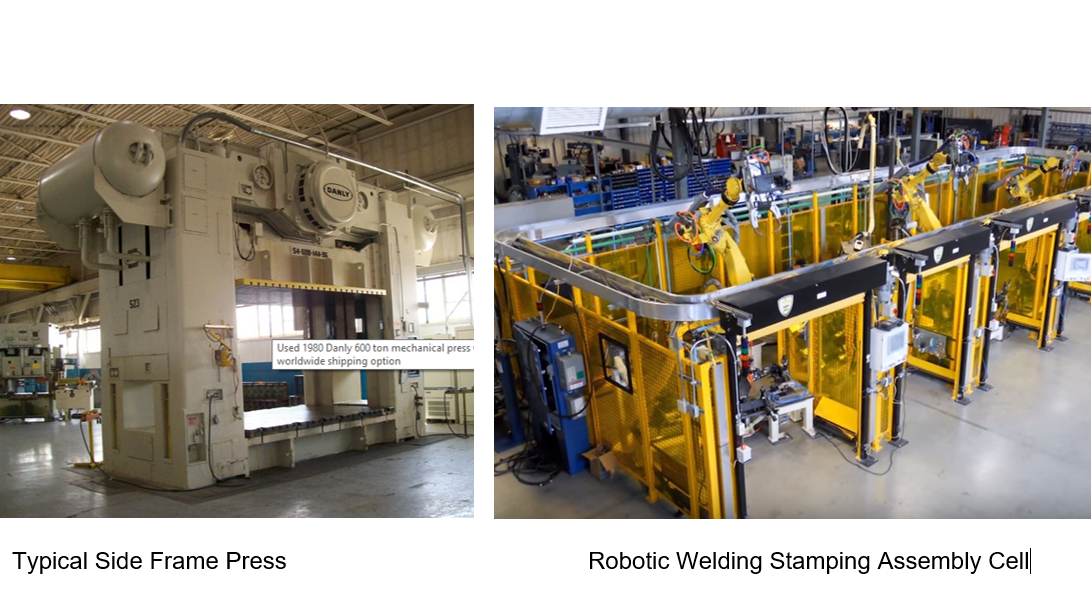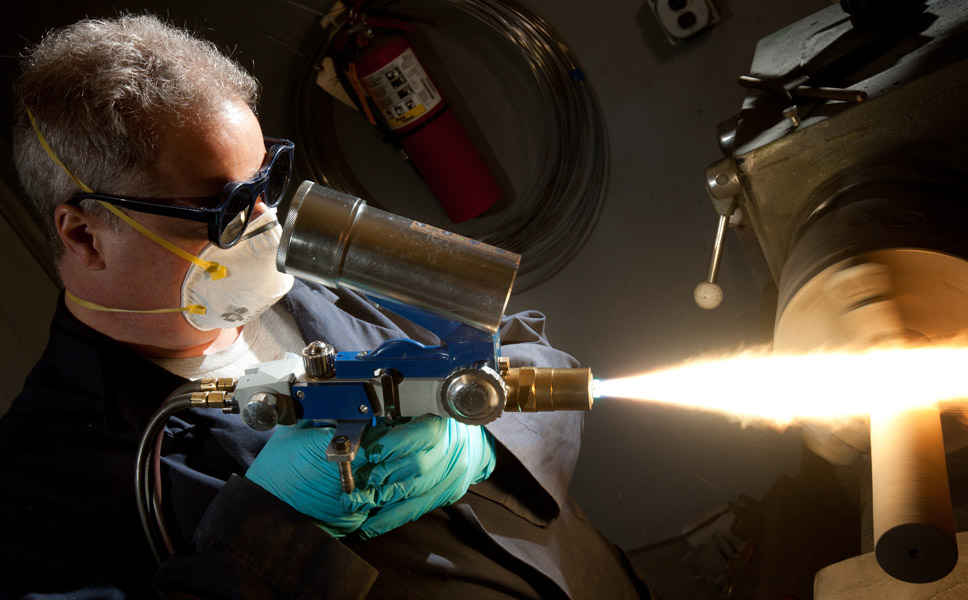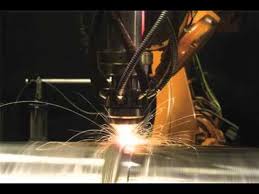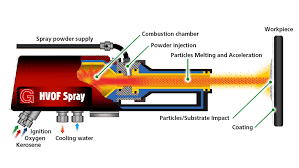Welding Process Solutions
Burns Bridge has accumulated almost 25 years of experience troubleshooting and addressing deficiencies in a wide variety of welding processes. Examples of such improvements are as follows:
- Complete elimination of aluminum casting weld rework in aluminum jobbing foundry by identifying and correcting all of the root causes of casting porosity in the moulding processes. Three employees were made redundant saving over $100,000 per annum and the welding equipment was sold. Casting machinability improved dramatically at the customer's resulting in high satisfaction and business growth.
- Implemented Tig welding repairs to water cooled high volume automated piston casting mould components (H12 hot work tool steel) at two piston casting locations in Canada and the USA. Approximately $200,000 per year in replacement casting tooling costs, was saved with almost no implementation costs, due to the fact that under utilized maintenance shop tig welder labour was constructively free.
- In an engineered pump manufacturing plant, out sourced pump casting welding rework and pipe fitting casting welding to competent third party sources, after identifying that the production welder was not capable of performing such work. Much rework and late shipped product was eliminated.
- Resolved cleanup issues with pump shaft packing wear sleeve from the hard facing weld process, by eliminating an unneeded de-burring and cleaning process, prior to the semi-automated hard face welding process.
- Resolved Deloro 50 plasma arc weld hard facing post weld rotating element cracking, by identifying poor preheat and employee failure to follow procedures. After having the electric resistance heater maintenance issues addressed, and adequate preheat established, a 98% reduction in hard face cracking was achieved, eliminating all expensive and time consuming rotating element rework (hard face removal by machining and re-welding).
- In an OEM high energy pump repair shop, resolved a chronic problem with "weld, machine, weld machine churn" by training internal staff on casting and weld defects using the magnetic particle acceptance charts. Weld churn machining churn (rework) was reduced by over 80% cutting repair lead times almost in half.
- In an automotive tier 1 robot weld assembly shop with 25 spot welding robots, resolved a common cause cold spot weld problem by identifying calcium deposition in the water cooled tips and a malfunctioning make up water, water softener (had not been maintained for 15 years). Installation of a new water softener together with acid flushing of the recirculating cooling water system eliminated this common cause failure mode.
- Identified a special cause cold spot weld problem on a four welds per cycle PLC controlled welding machine to be the PLC program. Installation of a new PLC program with latched outputs eliminated the cold welds.
- On a very large automated weld cell spot welding gas tank covers, having continuous downtime problems due to air pressure faults, identified and corrected the following two faults in the compressed air piping to the cell: 1. relocated an air receiver from upstream of the appliance regulator to downstream of the regulator and 2. remove redundant zone pressure regulators from each spot welder inside the cell. These improvements eliminated an average of 13 of 35 of cold welds per work piece and also eliminated the need to station a robotic technologist to reset the low pressure alarms every shift.
- In an automated tier 1 mig welding process cell making bumper mounting components increased the throughput from 250 pairs per shift to over 750 pairs per shift by changing the shielding gas, and fixing clamp fixturing stability issues.
- In a spare tire tailgate mounting bracket mig welding process eliminated burn through issues by reducing the wire size from 0.062 to 0.030" and changing the shielding gas to achieve good penetration.
- In a tier 1 mig welding shop having over 25 robots, eliminated the common cause of poor weld penetration by identifying the shielding gas mix as the root cause. CO2 concentration was increased from 3% to 13% achieving penetration where the lab technicians had "never" seen it before.
- In the same tier 1 welding shop reduced mig and spot welding rework from over 60% to less than 10% in less than 12 months allowing the shop to absorb a 20% increase in new business without hiring anyone.
- In the same tier 1 shop instigated robotic technician and engineering staff welding process training with the services of a leading weld technology industry service provider. Subsequent to the training, the shop's 25 mig process robots were laundered to standardize wire sizes, wire feed parameters, power supply settings etc. This work was key to reducing rework and at the same time saved over $45000 per month in weld consumables by substituting hard wire for both metal core and flux core wires.
- Burns Bridge identified the root cause of fillet weld failures in auxiliary piping installed on high energy pipeline pumps as being poor penetration caused by poor or inadequate OEM weld assembly processes. Prior to this assessment the organization incorrectly had identified pump and pipe vibration as the root cause and after installing stiffening gusset reinforcements, the customer was still seeing weld failures and weeping oil leakage. Poor penetration was proven to the OEM pump plant by sectioning and polishing a failed weld which showed zero penetration.
- Burns Bridge also has extensive experience with spray powder welding repairs to glass container moulds using Colmonoy powder.
- Most recently Burns Bridge set up a modern pump casing welding repair cell with fencing having translucent shielding curtains, two heavy duty weld positioners with solid state power supplies and localized fume extraction.
Burns Bridge does not consider himself to be an "expert" in welding. However, experience has found that many of the problems associated with welding are more to do with other process failures rather than the welding process itself. Where Burns Bridge does not have the specific welding knowledge, third party industry specialists are consulted as necessary.
Burns Bridge promises to take a "blank sheet of paper" approach to resolving your problems.
0
 Home
Home